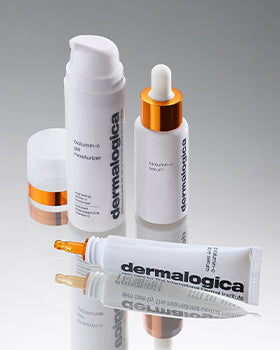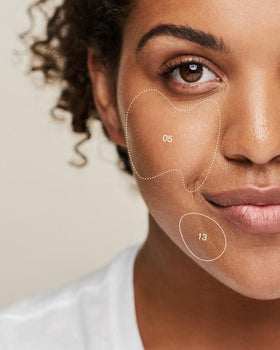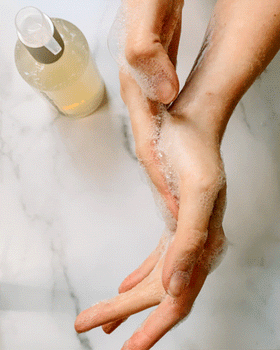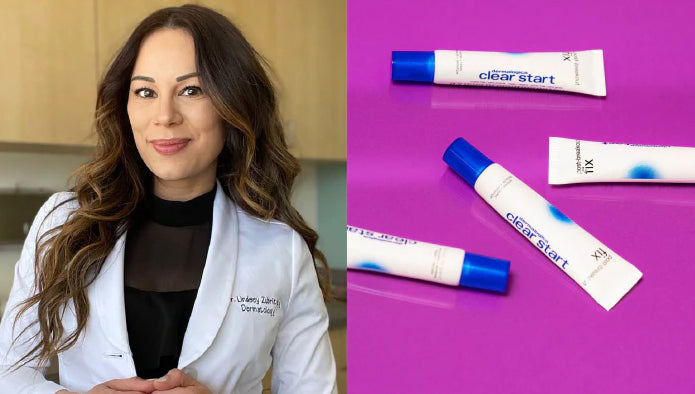We are joined today by board-certified dermatologist Dr. Lindsey Zubritsky, MD, FAAD, as she takes over our blog and shares her expertise on acne and how to effectively treat it.
Getting acne at any age can be frustrating. Whether you're a teenager or an adult, it can happen to anyone at any time (and breakouts always tend to conveniently show up right before a big event!). It can be so tempting to grab your nearest magnifying mirror and go to town on your zit, but did you know that sometimes popping a pimple can cause further, even irreversible damage?
So, what do you do when a pimple pops up? How do you know what is safe to do and what should be avoided? What pimples are poppable and which ones should you leave alone? When should you see a dermatologist? I'm a board-certified dermatologist, and I'm here to answer all of your burning, pimple-popping questions!
How to treat a pimple: step-by-step instructions from a dermatologist
Pimples happen to everyone, even dermatologists. Fortunately, they are easily treated with a few simple steps. I’m here to guide you through the best way to tackle your zit.
Step 1: Be sure to keep your skin clean and dry. You want to avoid additional breakouts or further irritation, so I recommend using a foaming cleanser for acne-prone skin, using a clean fresh towel to dry your face (do not use a body towel!), and ensuring your hands are clean before moving to the next step. I like using the breakout clearing foaming wash from clear start as a first step.

Step 2: Spot treat. Find products with active ingredients that have been proven to fight acne (ditch the toothpaste – it doesn’t actually work). My favorite ingredient to treat pimples is salicylic acid. Dab on this acne-fighting ingredient 1-2 times a day directly to the pimple to help calm inflammation and reduce bacteria and sebum production. I recommend the breakout clearing booster from clear start.

Alternatives: You can also try spot treating with prescription antibiotics like clindamycin or dapsone, retinols or retinoids, or benzoyl peroxide for good results. I do not recommend combining all of these ingredients, however, as this may be too irritating for your skin.
Step 3: Soothe the inflammation. One of my favorite tips is to apply ice wrapped in a cloth. Gently apply the ice for a short period of time to the area to help reduce inflammation, redness, and swelling.
Step 4: Repair the skin barrier. Acne medications can be irritating to the skin, so I recommend following any treatment with a lightweight moisturizer. For acne-prone skin, I like light creams or gel-based moisturizers with hyaluronic acid. I like the cooling aqua jelly moisturiser from clear start because it doesn’t feel heavy but still hydrates the skin.

Is it safe to pop a pimple?
The answer to this is tricky. In many cases, attempting to pop your pimple can result in further inflammation, damage, and even scarring. Most of the time, I do not recommend popping your pimples. However, if you do choose to pop your pimple, proceed with caution. I only recommend attempting to pop your pimple when it comes to a “head”. This means that the pus is superficial enough to the surface of the skin to extract with minimal risk of scarring. I recommend avoiding deep, cystic zits at all costs – attempting to pop this type of acne can lead to severe infection and permanent scarring.

How to pop a pimple safely on your own
Step 1: Wash your hands and face thoroughly. You want to avoid bacteria or infection risk. Be sure to clip your fingernails if you don’t plan to use tools for the extraction.
Step 2: Ensure that skin is totally dry before starting.
Step 3: Sterilize the area. Alcohol pads work well for this. Again, preventing infection is key!
Step 4: Use your fingers (wear gloves if you really want to do it right!) or use a clean, sterile comedone extractor to apply gentle but steady pressure to the sides of the pimple. This helps to drain the area. Do not overdo it! If it does not easily give, stop! You don’t want to cause any further damage to the skin or tissue. Continue to move in different directions around the pimple to ensure it is entirely drained.
Step 5: Once the pimple has been extracted, apply something to help soothe the inflammation and redness like a cool compress or cortisone.
Step 6: Protect the skin barrier. Apply a pimple patch to help with the healing. I prefer using hydrocolloid dressings specifically made for pimples to help with healing.
Other tips: Attempt to pop your pimple after taking a warm shower. This helps to open up the skin and allow for easier extraction.
What should you do after the pimple is popped?
The aftercare for treating a recently popped pimple is crucial to preventing post-acne marks, infection or scarring. Treat the area like you would a cut or wound. Be sure to hold gentle pressure to stop any bleeding. I recommend cleaning the area immediately after the procedure and daily with gentle soap and water to remove any bacteria off the skin. Next apply an emollient to help heal the skin - plain ol’ Vaseline or petroleum jelly works just fine. Keeping it covered is also a good way to speed up healing and prevent infection. I like using hydrocolloid patches to help heal the skin or silicone sheets. While the area is healing, avoid any harsh products to the skin to prevent further irritation. I recommend skipping your exfoliators, vitamin C, toners, or any alcohol based products. Gentle skincare is key! To prevent further damage and hyperpigmentation, look for brightening products with salicylic acid and hexylresorcinol like the Post-Breakout Fix from clear start.

Other expert tips:
-Avoid picking the area! While it may be tempting, the best thing you can do is leave it alone.
-Once entirely healed, be sure to wear SPF every single day. This helps prevent post-inflammatory hyperpigmentation and scarring, which can be difficult to treat. I recommend an SPF 30 at least daily.

Pimples can be frustrating, but try not to panic
The best offense is a good defense. Try to prevent your pimples from forming in the first place by using effective acne products with proven ingredients. Through consistency and a good skin regimen, you may entirely be able to eliminate the need to pop pimples!
Finally, if all else fails, schedule an appointment to see a board-certified dermatologist. Not only do we have in-office procedures to help directly treat pimples like acne surgery or an anti-inflammatory injection, but we also can help create an effective acne regimen curated just for your skin.
For more acne and skincare tips, follow Dr. Lindsey Zubritsky, @dermguru on TikTok.



